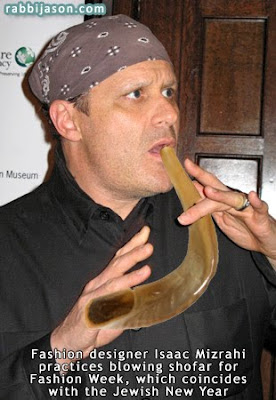What follows is my Op-Ed that was published in this week’s Detroit Jewish News. I hope you’ll leave your reaction to it in the comments section on this blog.
Rabbi Naftali Rothenberg, an Orthodox rabbi, recently wrote an Op-Ed in The New York Jewish Week entitled “Time To End The Reform-Orthodox Wars.” He was responding to Israeli chief rabbi Shlomo Amar’s attack on Reform Jews and his pressure on the Israeli government to prevent involvement of non-Orthodox movements in state and religion affairs.
I was pleased to read Rothenberg’s perspective that it is time for Orthodox Jews to “build bridges of cooperation [to Reform and Conservative Jews] for the sake of the entire people of Israel and its future” without compromising principles or “fidelity to a life of Torah and mitzvoth.”
My own sense is that despite some animosity toward other denominations of Judaism, which is often bred on ignorance, there is actually much tolerance and understanding among fellow Jews. We are moving toward a Jewish community in which the borders that separate the denominations are becoming blurred.
Rothenberg recognizes the need to bridge the vast abyss between his brand of Orthodoxy and the more progressive streams of modern Judaism, but he remains concerned that the depths of antipathy will make this too difficult. I disagree.
We live in a time when a Jewish person’s Facebook profile identifies her religion as “Recon-newel-ortho-conserva-form.” This combination of religious denominations does not demonstrate confusion or haziness, but rather the realization that there is “meaning” to be made from the various pathways to Torah.
I knew when I decided to become a rabbi that the Conservative Movement’s Jewish Theological Seminary would be the right place for my training. I had been raised in Conservative Judaism, studying at Hillel Day School of Metropolitan Detroit and honing my leadership skills in United Synagogue Youth, the movement’s youth program. However, it was in rabbinical school that I came into contact with the other “flavors” of Judaism – praying each Shabbat at an Orthodox shul, engaging in Torah study with a Reconstructionist rabbi, and training as a hospital chaplain with a Reform rabbinical student.
My first job after graduating rabbinical school was at the University of Michigan Hillel, an institution that offers five different Shabbat service options. On any given Friday evening I could find myself in a Reform havurah, a Conservative minyan, an egalitarian gathering with separate seating, or a traditional Orthodox service. From week to week, I saw many students sampling the various options, less concerned with ideological labels than with finding a comfort level that spoke to them spiritually, intellectually, and communally. They were in search of meaning, not a denominational brand.
Last year, I traveled to New York City several times to be part of a fellowship with rabbinic colleagues spanning the denominations. We gathered every few months to study Torah together, to pray together, and to dialogue about the important issues of the day. As part of Clal’s Rabbis Without Borders program, we found a safe space to share our distinct viewpoints on a host of topics – from faith perspectives on healing to the economy’s effect on religion to the role of music in prayer. We might not have all agreed on how the Torah was revealed to the Jewish people in the desert thousands of years ago, but we each managed to share our Jewish wisdom through the medium of Torah.
Denominational labels are becoming far less important in the 21st century as the borders have blurred. While I may be a card-carrying Conservative rabbi, I work for Tamarack Camps – a Jewish camping agency that serves the entire community, from the unaffiliated to the religious. I lead a Reconstructionist synagogue, Congregation T’chiyah, in which my more traditional practices and beliefs are not compromised, but respected and admired. I teach teens on Monday nights at Temple Israel, one of the largest Reform congregations in the world. I run a kosher certification business in which I demand the highest levels of kashruth compliance to meet the requirements of our faith and the needs of our community.
Looking beyond the borders that divide our Jewish community is not always easy or comfortable. After all, there are real differences that set us apart. There are always going to be political and ideological conflicts that keep us from praying together or eating together. But we must always seek to dialogue with civility and come together over the issues on which we can agree. A Reform Passover seder may differ greatly from an Orthodox one, but the context is the same – we are all recalling the days our people spent in slavery. Neither Pharaoh nor Hitler differentiated between Reform, Conservative or Orthodox Jews.
.jpg)




